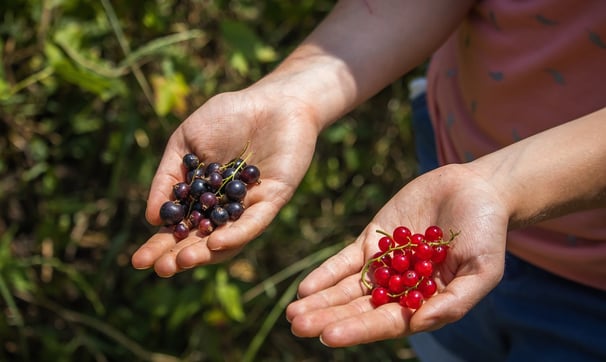Safety first when eating wild plants
EDUCATIONFOODBUSHCRAFT


The Importance of Safely Identifying Wild Plants for Food Sources
Nature has bestowed upon us an incredible abundance of edible wild plants, providing a valuable food source for human beings for thousands of years. However, the allure of foraging for wild edibles comes with inherent risks. Properly identifying these plants is of paramount importance to ensure our safety and well-being. In this blog post, we will delve into the significance of safely identifying wild plants for food sources and the potential consequences of inadequate knowledge in this pursuit.
The Abundance of Nature's Pantry
From luscious berries and leafy greens to nutritious roots and tubers, the natural world offers an extensive array of wild edibles. These plants are often rich in vitamins, minerals, and antioxidants, making them a valuable addition to our diets. Embracing these gifts from nature not only broadens our culinary horizons but also fosters a deeper connection with the environment.
Mitigating the Risks of Toxicity
While many wild plants are safe for consumption, some have evolved natural defenses, such as toxins, to protect themselves from herbivores. Ingesting even a small amount of a toxic plant can lead to severe illness or, in extreme cases, prove fatal. Safely identifying wild plants helps us steer clear of toxic species and prevent any unfortunate mishaps.
Knowledge is Power
Proper identification of wild edibles empowers us with the ability to differentiate between safe, nutritious plants and potentially harmful ones. Acquiring knowledge about local plant species, including their distinctive characteristics and growth patterns, is essential. By investing time in learning about wild plants, we arm ourselves with the tools to make informed decisions while foraging.
Aiding Conservation Efforts
The act of identifying wild plants for food sources isn't just about protecting ourselves; it also plays a vital role in preserving ecological balance. Indiscriminate foraging or misidentification of rare or endangered plants can have devastating consequences on local ecosystems. Responsible foraging practices, backed by accurate identification, allow us to interact harmoniously with nature while safeguarding its delicate biodiversity.
The Perils of Misidentification
Relying on guesswork or incomplete knowledge when foraging for wild plants can lead to serious consequences. Instances of accidental poisoning due to misidentified plants are not unheard of and highlight the importance of proper identification. Moreover, misidentification can lead to missed opportunities to enjoy safe and nutritious edible plants.
Seeking Expert Guidance
For novice foragers, seeking the guidance of experienced experts or local foraging groups can be immensely valuable. These mentors can help identify common edible species, teach the subtleties of distinguishing between look-alike plants, and offer insights into safe foraging locations.
Conclusion
Foraging for wild plants can be an enriching and rewarding experience, connecting us with nature in profound ways. However, it is crucial to remember that venturing into the wild for food requires a responsible and knowledgeable approach. Safely identifying wild plants is not merely a desirable skill; it is a fundamental necessity to protect ourselves from potential harm and maintain the health of the environment.
As we explore the vast pantry that nature offers, let us do so with reverence, curiosity, and an unwavering commitment to safety and preservation. Educating ourselves about wild plants and foraging responsibly ensures that we can savor the gifts of the earth while respecting the delicate balance of our ecosystems. So, let's embark on this journey of discovery with an open mind and a heart that cherishes and protects the wonders of the natural world. Happy and safe foraging!
